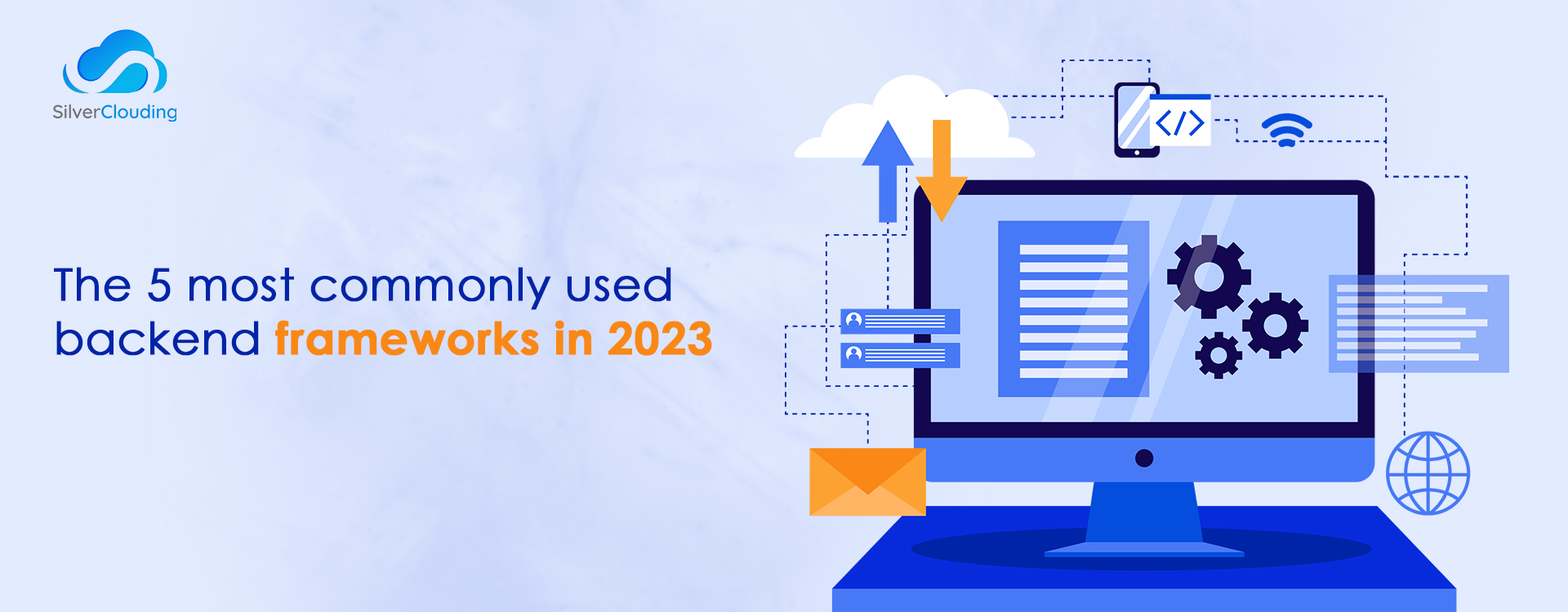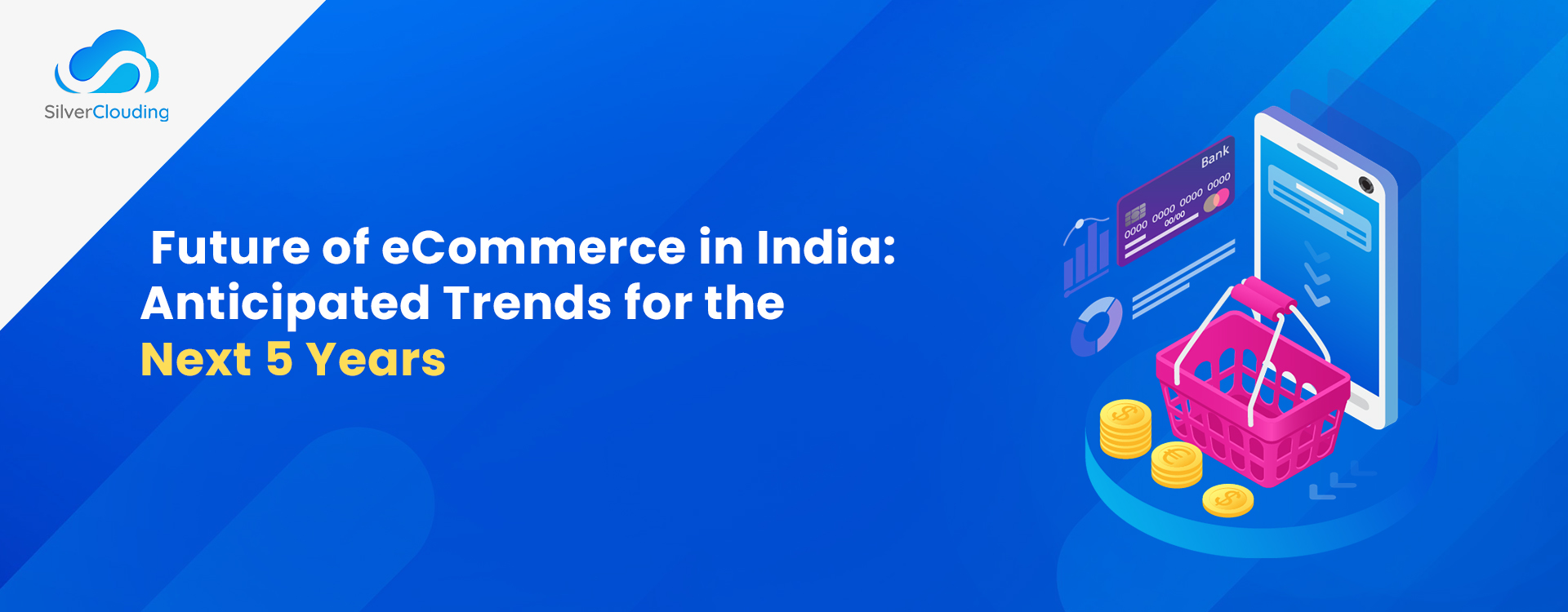Businesses have experienced difficulties and enormous changes in recent years, and this trend won’t stop in 2023! Organizations must handle the pandemic’s aftereffects.
According to research by McKinsey & Company, between now and 2027, the world will see a once-in-a-lifetime tsunami of capital spending on physical assets. Around $130 trillion will be invested in initiatives to replace and decarbonize essential infrastructure.
In these circumstances, you must ask what the most important component of your company is that will keep you in the lead. Right? The majority of you will think about, research, and look into topics like inflation, supply chain security, sustainability, immersive consumer experience, and more!
Let’s talk about the backend in web development, its significance, and the top 8 backend frameworks for 2023 in this article.
What is the backend in web development?
The technologies used in conjunction with backend programming languages to develop the logic and functionality of a software application are known as backend frameworks. Best Backend frameworks support the behind-the-scenes magic that enables an application to function as intended even while it is invisible to the end user. Best Backend frameworks, often known as “server-side frameworks,” provide you with more control over the functions that your app or website performs.
On the other hand, the front end, often known as the client side, describes what people see when they use a website or software application. Frontend programming languages and technologies manage every aspect of a software application that is visible to the user, including the way controls are organised, the colours and animations they utilise, and how responsive it is.
Backend Framework Types
As a business, you need to be aware that there are two main sorts of best backend frameworks, which may be broadly divided into:
• The client-side web framework, which only addresses the user interface. Both the user’s experience and how simple it is for them to use the application are regarded as client-side components.
• Server-side web framework: This kind of framework is used for back-end operations including managing data and web servers, manipulating databases, and so forth.
What advantages do backend frameworks offer?
Backend frameworks offer pre-made tools, guidelines, and templates for quick application development, including features like:
• Control application states, such as shopping carts, securely process payments, safely manage user data, support several software applications, such as a desktop website and a mobile application, and communicate with a variety of other third-party apps and REST APIs.
• Deliver pages, views, and data to frontend applications to present to the user.
Backend frameworks offer pre-made tools, guidelines, and templates for quick application development, including features like:
• Control application states, such as shopping carts, securely process payments, safely manage user data, support several software applications, such as a desktop website and a mobile application, and communicate with a variety of other third-party apps and REST APIs.
• Deliver pages, views, and data to frontend applications to present to the user.

Graph courtesy: https://codingnomads.co/blog/best-backend-frameworks/#what-are-backend-frameworks
The top 5 backend frameworks in 2023
1. Django
A high-level web framework called Django enables the effective creation of quick, secure online applications in Python. Model-view-template (MVT), a variant of the model-view-controller (MVC) pattern, is the paradigm that Django employs. You can keep your code logically organised into layers by using Django’s MVT model. Many of the model’s controller components are handled by the Django framework, allowing you to specify the data view and presentation templates.
Django is a “batteries included” framework, which means that the majority of the libraries and tools needed to construct standard web applications are already pre-packaged in it.
Advantages :
- Django promotes best practices in programming and permits developers to operate entirely within the framework, which might be advantageous for newer programmers.
- Because Python is the most popular programming language, Django has a strong developer community that can be a resource while you create your project.
- Django is the best choice for your project if you’re working with relational data and prefer an all-in-one framework with a dependable integrated ORM. You can get started with Django and expand your application later without having to add to the framework thanks to the batteries-included philosophy. Additionally, you won’t need to be concerned about compatibility problems with other libraries.
2. Laravel
Development of model-view-controller (MVC) web applications is facilitated by the cross-platform PHP framework Laravel. PHP, one of the original server-side web scripting languages that have been around for almost as long as the internet, is the foundation of Laravel.
Due to legacy code, PHP is still used in over 80% of websites even though it is no longer the most popular programming language.
Advantages :
• Since PHP has been around for almost as long as the web, Laravel enables you to take advantage of its expertise and community support network.
• Sail, a Docker-based installation that you can customise, makes it simple to install Laravel.
• Modern web application capabilities are built-in, allowing you to concentrate more on code than configuration.
3. Ruby on Rails
Do you need a backend framework that is packed with different components to create iOS or Android applications? then Ruby on Rail is a great option to think about.
Its improbably effective backend architecture for creating online and mobile applications. This framework features a sizable and vibrant community and is quick to construct.
With a selection of pre-packaged Ruby applications, this backend framework streamlines improves accessibility, and expedites the development process. Developers were freed from the tiresome portions of coding by using the Ruby on Rails approach to application development, which allowed them to concentrate on the crucial functions and business logic. It also increases productivity and facilitates the rapid development of apps.
Advantages :
Convention over configuration, scalability, active record, automated deployment, a clear testing tool, interpretable scripting language, and quick and simple code. Several websites, including Basecamp, Dribbble, and Airbnb, run on Ruby on Rails.
4. Express.js
As it enables programmers to create an application with JavaScript on the backend for the first time, Express.js delivers JavaScript’s newfound backend functionality. This compact framework offers built-in web app functionality and the Express API to developers.
Express, which is based on Node JS, serves as middleware to manage your servers and routes.
Users of the Express API can set up routes for sending and receiving requests between the front end and the database. Numerous other template engines and packages, including Moustache, Pug, EJS, and many others, are also supported by the express framework.
You can create enterprise-size apps with top-notch performance because of their great scalability.
Advantages:
Express.js has the following benefits over other backend frameworks:
Low learning curve, quick app development, I/O request processing, open-source community, and simple integration of third-party services & middleware. Fully customisable. The standard for NodeJS web middleware.
MySpace, LearnBoost, and County are a few examples of websites that use Express.js.
5. Next.js
Using the Next.js framework, static websites may be created quickly and effectively. Although Next.js is regarded as a simple framework, it nonetheless has all the functionality required to build a high-performing React application.
Advantages
- Because of its out-of-the-box components and basic design, Next.js is excellent for quickly developing a minimal viable product (MVP). • Next.js’ powerful pre-rendering features provide better site performance, which benefits SEO and search rankings.
- Next has a large support community because it is one of the most widely used React frameworks for building server-side rendering web apps.
What’s next?
There are several backend frameworks available for your projects, but it’s crucial to choose the one that aligns with your specific requirements. Whether you prioritize rapid development, security, scalability, support, or adaptability, it’s important to consider the best option.
At SilverClouding, we focus on the latest and most innovative technologies for web development. Our team of skilled developers specializes in these backend frameworks. Whether you need assistance or services in these technologies, we are here to help. These frameworks are particularly valuable for businesses in the e-commerce industry, providing the necessary tools and capabilities to thrive in the online market. Partner with us to leverage these cutting-edge technologies and drive the success of your e-commerce business.




